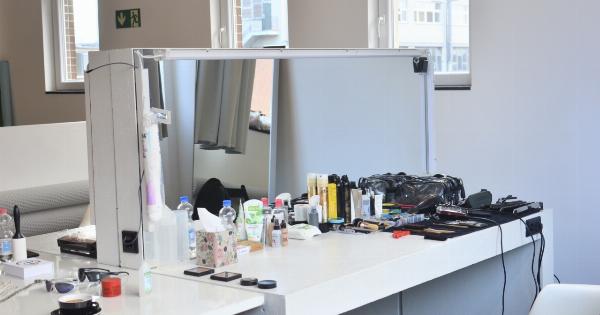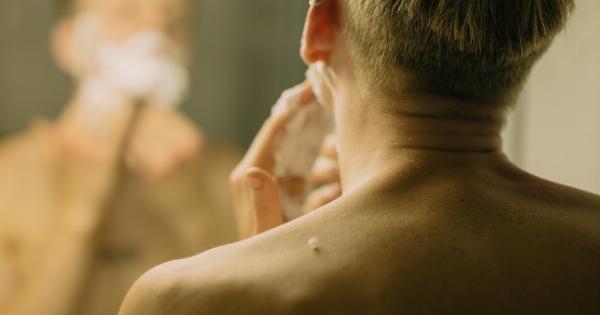Having turned or ingrown hairs can be a frustrating and pesky problem that many of us face. These hairs can cause discomfort, pain, and even mar the appearance of our skin.
But fear not! In this article, we will delve into the causes of turned hairs and provide you with some helpful tips and tricks to remove them effectively.
What Causes Turned Hairs?
Turned hairs, also known as ingrown hairs, occur when a hair strand grows back into the skin instead of upward and outward. They can happen to anyone, but are more common in people with curly or coarse hair.
There are several factors that contribute to the development of turned hairs:.
1. Improper Hair Removal Techniques
One of the common causes of ingrown hairs is improper hair removal techniques.
Shaving against the grain, using dull razors, or pulling the skin taut while shaving can lead to hair strands getting trapped beneath the skin’s surface and causing ingrown hairs. It is crucial to adopt proper hair removal practices to minimize the risk.
2. Tight Clothing and Friction
Tight clothing and friction from activities like running or exercise can irritate the skin and contribute to the development of ingrown hairs.
Constant rubbing against the skin can cause hair strands to shift their growth pattern, leading to their downward growth under the skin surface.
3. Dead Skin Cell Buildup
Dead skin cell buildup can clog hair follicles, preventing hair strands from growing outwards. Instead, they grow sideways or downwards, resulting in ingrown hairs.
Exfoliating regularly can help remove dead skin cells and reduce the chances of developing turned hairs.
4. Improper Skin Moisture
When the skin lacks moisture, it can become dry and flaky, creating an environment that promotes the growth of ingrown hairs. Properly moisturized skin helps soften the hair strands, allowing them to grow out of the follicles without any obstruction.
5. Genetic Predisposition
Some individuals may have a genetic predisposition to developing ingrown hairs. If your family members have a history of ingrown hairs, there is a higher likelihood that you may experience this issue as well.
While genetics cannot be changed, the tips and tricks mentioned in this article can still help manage and reduce ingrown hairs.
Tips and Tricks for Removing Turned Hairs
Now that we understand the causes of turned hairs, let’s explore some effective tips and tricks for their removal:.
1. Proper Hair Removal Technique
When shaving, make sure to shave in the direction of hair growth to reduce the risk of ingrown hairs. Use a sharp razor and avoid pulling the skin taut.
If using other hair removal methods like waxing or depilatory creams, follow the instructions carefully to minimize the chances of turned hairs.
2. Exfoliate Regularly
Exfoliating your skin helps remove dead skin cells that can clog hair follicles. Use a gentle exfoliating scrub or brush to slough off the dead skin and encourage proper hair growth.
Avoid using harsh scrubs, as they can irritate the skin and exacerbate the problem.
3. Keep the Skin Moisturized
Properly moisturizing the skin is essential for preventing ingrown hairs. Use a moisturizer suitable for your skin type to keep the skin hydrated and soft.
This helps the hair strands grow outwards instead of getting trapped beneath the skin’s surface.
4. Avoid Tight Clothing
Avoid wearing tight clothing, especially in areas prone to ingrown hairs. Opt for loose-fitting and breathable fabrics that reduce friction against the skin.
This will minimize the chances of hair strands changing their growth direction and causing ingrown hairs.
5. Use a Warm Compress
If you notice a turned hair, gently apply a warm compress to the affected area. This helps soften the skin and open up the hair follicle, making it easier to remove the ingrown hair.
After applying the warm compress, use clean tweezers to carefully lift the hair out of the skin.
6. Do Not Pick or Squeeze
As tempting as it may be, avoid picking or squeezing ingrown hairs. This can lead to infections, scarring, and prolonged healing time. Instead, practice patience and follow the proper removal techniques mentioned in this article.
7. Seek Professional Help
If you continuously struggle with ingrown hairs or have a severe case, it may be beneficial to seek professional help.
Dermatologists and estheticians can provide treatments such as laser hair removal or chemical peels to address the issue and prevent further ingrown hairs.
Preventing Future Turned Hairs
Preventing future turned hairs is just as important as removing existing ones. Here are some additional tips to help prevent ingrown hairs:.
1. Regularly exfoliate the skin to prevent dead skin cell buildup.
2. Use an electric razor or single-blade razor to reduce the chances of hair strands being pulled beneath the surface.
3. Apply a warm towel or compress before shaving to soften the hair and open up the follicles.
4. Avoid applying excessive pressure while shaving, and be mindful of the direction of hair growth.
5. Moisturize the skin daily to keep it soft and hydrated.
6. Consider using chemical exfoliants or products containing salicylic acid to prevent clogged follicles.
Conclusion
Dealing with turned hairs can be frustrating, but with the right knowledge and techniques, you can effectively remove and prevent them.
Remember to adopt proper hair removal techniques, exfoliate regularly, moisturize your skin, and avoid tight clothing. If the issue persists or becomes severe, it is always advisable to seek professional help. By following these tips and tricks, you can bid farewell to those pesky ingrown hairs and enjoy smoother, healthier skin.




























